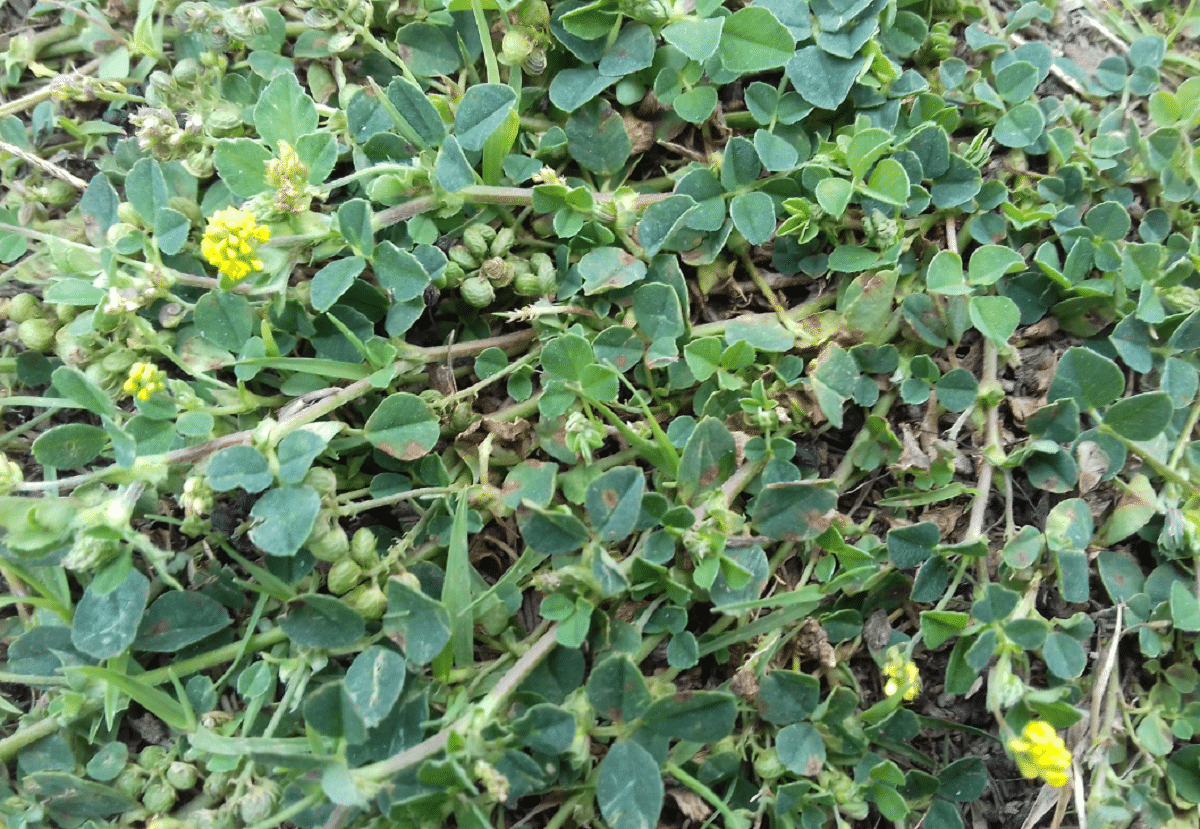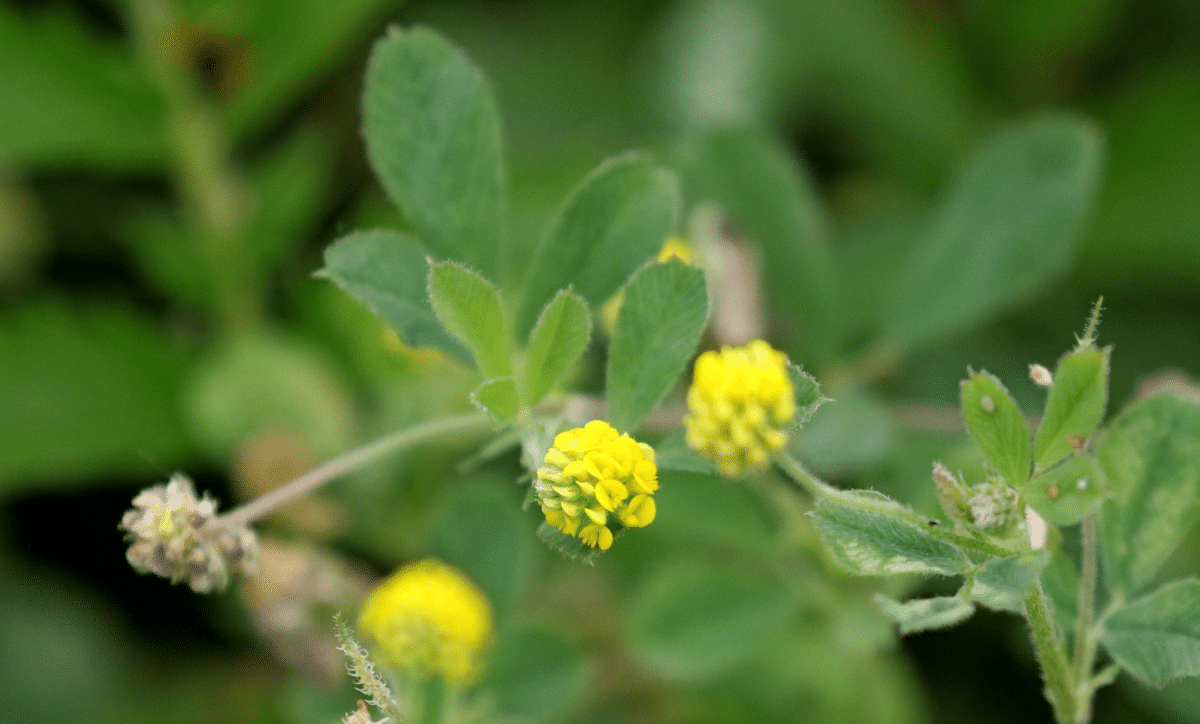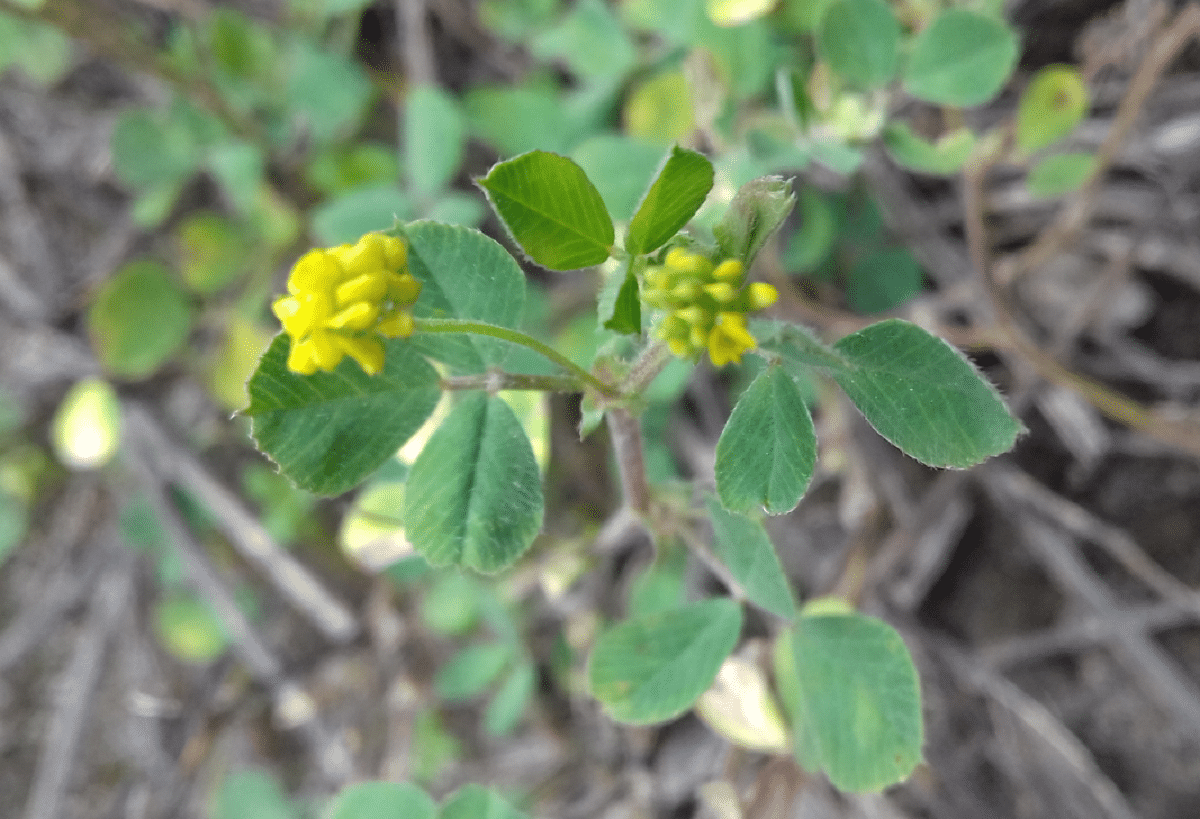
Today we will talk a little about a somewhat peculiar plant, which most of the time goes unnoticed due to its small size, but still has great importance for some people and gardeners.
Today we give the opportunity to Medicago lupulinWhich it is a plant capable of controlling the growth of other species, especially those that are considered weeds. So without further ado, let's get started.
General data of the Medicago lupulin

Black lupulin, or medicago lupulin, is a common broadleaf grass and prostrate found throughout the US and southern Canada. Native to Europe and the temperate zone of Asia. It is a member species of the legume family (Fabaceae) Y has other common names such as yellow clover, black clover, and medicinal hops.
This plant is usually usually found in disturbed areas or lawns, as well as in fields and pastures. During the summer, the annual broadleaf grows prostrate on the ground and has trifoliate leaves with a spur in the center of the leaf.
It is most often found as a weed in dry and sunny areas on the lawn and on vacant lots, such as along roads and railways, but it can also be a nuisance in gardens and fields if not properly controlled.
Like other members of the legume family, black medicine has a symbiotic relationship with bacteria Rhizobium. This bacteria causes the formation of nodules on the roots and fixes atmospheric nitrogen. Some of this nitrogen is used by the growing plant, but it can also be used by other plants that grow nearby.
Features
Flowers
Has yellow flowers that are in a rounded raceme at the end of a stem and emerging from the leaves. These will produce black seed pods when they reach maturity. Each flower head shaped like a balloon and consists of a dense cluster of 15-50 cm small yellow flowers.
This aggressive plant forms dense clumps of seed pods after flowering. Small bright yellow flowers are produced from the axils of the leaves. Each inflorescence is a compact group. The flowers can be found throughout the growing season, although individual plants stop flowering once the seeds are set.
Growth

Black lupulin has the ability to thrive in dry, nutrient-poor soils. At the same time, it has the potential to fix these problems in the lawn and the garden will minimize the appearance of this weed.
Its root system has a thick branched taproot that can form nodules. They add nitrogen to the surrounding soil. This taproot grows deep in most soils.
Several hanging, slightly hairy stems grow from the base. The plant grows close to the ground, spreading up to 5 cm, but does not take root along the stems. To be able to handle this plant, you have to have hand tools or weeding that can remove the large taproot.
Leaves
Each leaf is divided into 3 leaflets, also called trifoliate. The central leaflet is attached to the stem by a short stem, while the two outer leaflets are attached directly to the stem. All other leaves are trifoliate. The plant's dark green leaves are similar to clover leaves, with three oval leaflets. It has a small spur or tooth at the tip, dentate margins and prominent and parallel veins. The central leaflet protrudes slightly into an extended petiole.
And if you're wondering why we're talking about this, it's for the simple reason that this feature, along with the small tip that sticks out at the apex of the brochure and the jagged margins, helps distinguish black medicine from other trifoliate legumes.
As a curious fact and before moving on to the next characteristic, you should know that the leaves are produced alternately along the stems. There are a pair of stipules (small leaf-like appendages) where each petiole joins the main stem.
Fruits
The fruits that form after pollination look like small kidneys arranged in clusters. The coiled seed pods turn black when mature. This plant produces viable seeds in normal mowing conditions They can persist in the soil for years, so it is important to control this weed before flowering and seed establishment.
Farming
On lawns, the Medicago lupulin can be used through good grass use practices that promote dense grass growth (high cut, fertilization and proper irrigation), making it difficult for black medicine to persist.
Since the black medicinal plant usually grows in places where some soil compaction has occurredAs along curbs and sidewalks, reducing compaction will also help. Individual plants can be plucked by hand. Even the largest plants are easy to pluck, especially after the rain has softened the soil.

However, for large areas or dense infestations, a broadleaf herbicide can be applied to actively growing plants during the growth stage from seedling to flower. Chemical controls are best applied from late spring to early summer, and again early to mid-fall. Yes indeed, you have to read and follow the instructions on the label carefully.
This plant thrives in areas with full or partial sun, humid conditions, and soil that contains loam, clay, or gravel. It is a weedy and aggressive type species, but is often overlooked due to its low growth habit and relatively small size. The roots add nitrogen to the soil forming an association with rhizobial bacteria.
Most common location and habitats
Black lupulin found in every county in Illinois and it is quite common. This plant was introduced from Asia to North America and for agricultural purposes. Habitats include grasslands (black clay soil), brushy meadows, old fields, farmlands, grasslands, vacant lots, landfills, cemeteries, lawns, areas along railroads and roadsides, and miscellaneous waste areas.
This plant usually found in very disturbed areas, although it can invade high-quality grasslands. In the latter case, it becomes one of the understory plants that can tolerate the shade of higher grassland vegetation.